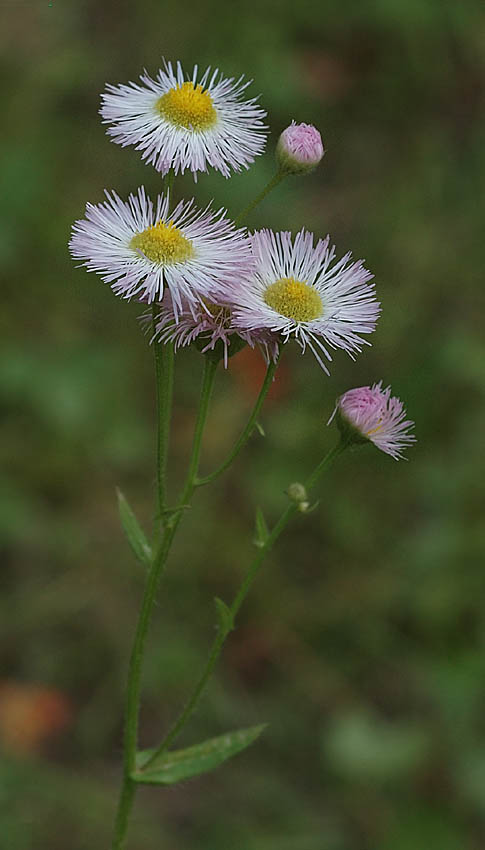 |
juice watery; NOT milky
|
 |
NOT
[basal leaves mostly 1-6 cm long, linear to oblanceolate or spatulate, forming a
dense rosette; plants with a well-developed taproot; and either densely
caespitose, seldom more than 5 cm tall, the heads sessile among the leaves, or
with stout, simple stems, 5-15 (25) cm tall, heads solitary, involucres 2-4 cm
wide, bracts ciliate to pectinate or fimbriate, rays blue and achenes densely
pubescent, obovate to triangular]
|
 |
plants usually with leafy stems; NOT [plants low, stemless, tufted]
|
 |
leaves NOT extending beyond flowers
|
 |
leaves appearing before the flowers
|
 |
leaves alternate or basal; NOT opposite
|
 |
basal leaves NOT cordate, NOT sagittate
|
 |
involucral bracts subequal or more or less imbricate, often green in part, but
neither definitely leafy nor with chartaceous base and herbaceous green tip; NOT
[involucral bracts either subequal and the outer leafy or more commonly
evidently imbricate, with chartaceous base and evident green tip, sometimes
chartaceous throughout]
|
 |
bracts in 1 or 2 series; NOT [bracts in several series]
|
 |
flower heads with florets both tubular and ray
|
 |
ray
florets pistillate or neuter; NOT perfect
|
 |
ray
florets conspicuous
|
 |
ray
florets 50 or more; NOT [ray florets 10-50]
|
 |
rays
white, to pink, purple or blue; NOT [yellow or orange]
|
 |
stamens united to form a tube around the pistil
|
 |
style-branches 0.5 mm long or less, or obsolete; NOT [style-branches ordinarily
more than 0.5 mm long]
|
 |
style-branches lanceolate or broader, acute to obtuse; NOT [style-branches
lanceolate or narrower, acute or acuminate]
|
 |
pappus of capillary bristles, at least in part; NOT [pappus of 1 or 2 short
awns, a mere crown or none]
|
 |
pappus composed of numerous hairs; NOT [pappus absent or composed of a few
hairs]
|

